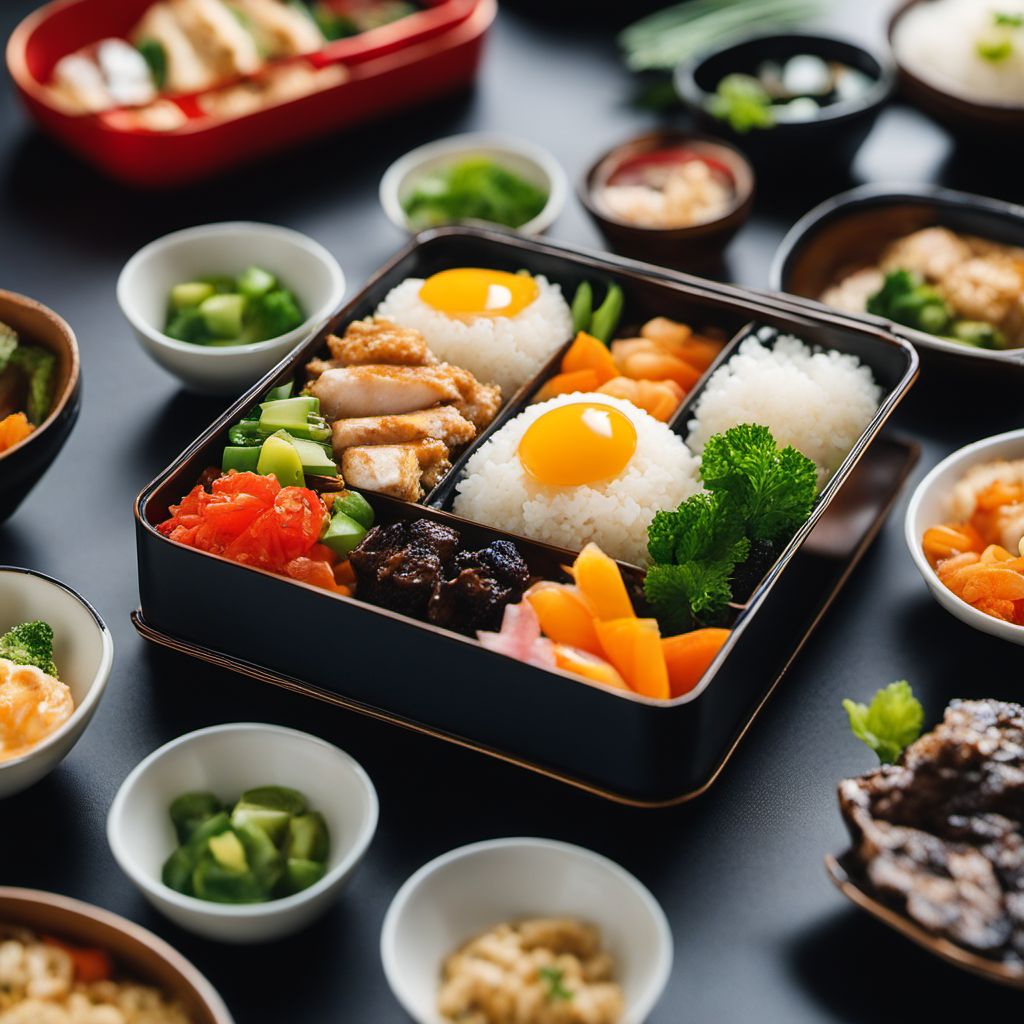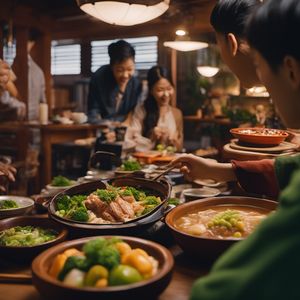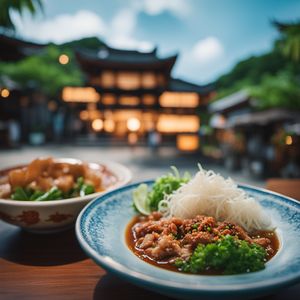
Dish
Bento
Bento is a balanced and nutritious meal, with a good mix of carbohydrates, protein, and vegetables. The rice provides a good source of carbohydrates, while the fish or meat adds protein and flavor. The vegetables add additional nutrients and fiber. This dish is suitable for pescatarians and omnivores, but may not be suitable for vegetarians or vegans due to the presence of fish or meat.
Origins and history
Bento has been a part of Japanese culture for centuries, and is often associated with the country's lunch culture. The word "bento" literally means "convenient" or "convenience," and refers to the ease of carrying and eating the meal.
Dietary considerations
This dish is suitable for pescatarians and omnivores, but may not be suitable for vegetarians or vegans due to the presence of fish or meat. It is also high in carbohydrates and may not be suitable for those on a low-carb diet.
Variations
There are many variations of bento, with different dishes being served depending on the region and restaurant. Some variations may include sushi or sashimi, while others may include grilled fish or meat dishes. Vegetarian options such as tofu or vegetable tempura may also be available.
Presentation and garnishing
Bento is typically presented in a box-shaped container, with each component of the meal arranged separately. Garnishes such as sliced scallions or sesame seeds may also be used.
Tips & Tricks
To make the dish more healthy, consider choosing grilled or steamed dishes instead of fried dishes, and opting for vegetable-based side dishes such as pickled vegetables or miso soup. Be mindful of the sodium content in some dishes, and limit your intake accordingly.
Side-dishes
Bento is typically served with a variety of side dishes, such as pickled vegetables or miso soup. It may also be accompanied by green tea or sake.
Drink pairings
Green tea is a popular drink pairing for bento, as it helps to cleanse the palate between bites. Sake may also be served.
Delicious Bento recipes
More dishes from this category... Browse all »

Afternoon Tea
British cuisine

Anju
Korean cuisine

Aperitivo
Italian cuisine

Banchan
Korean cuisine

Chirinabe
Japanese cuisine

Cicchetti
Italian cuisine

Cream Tea
British cuisine

Dim sum
Chinese cuisine




